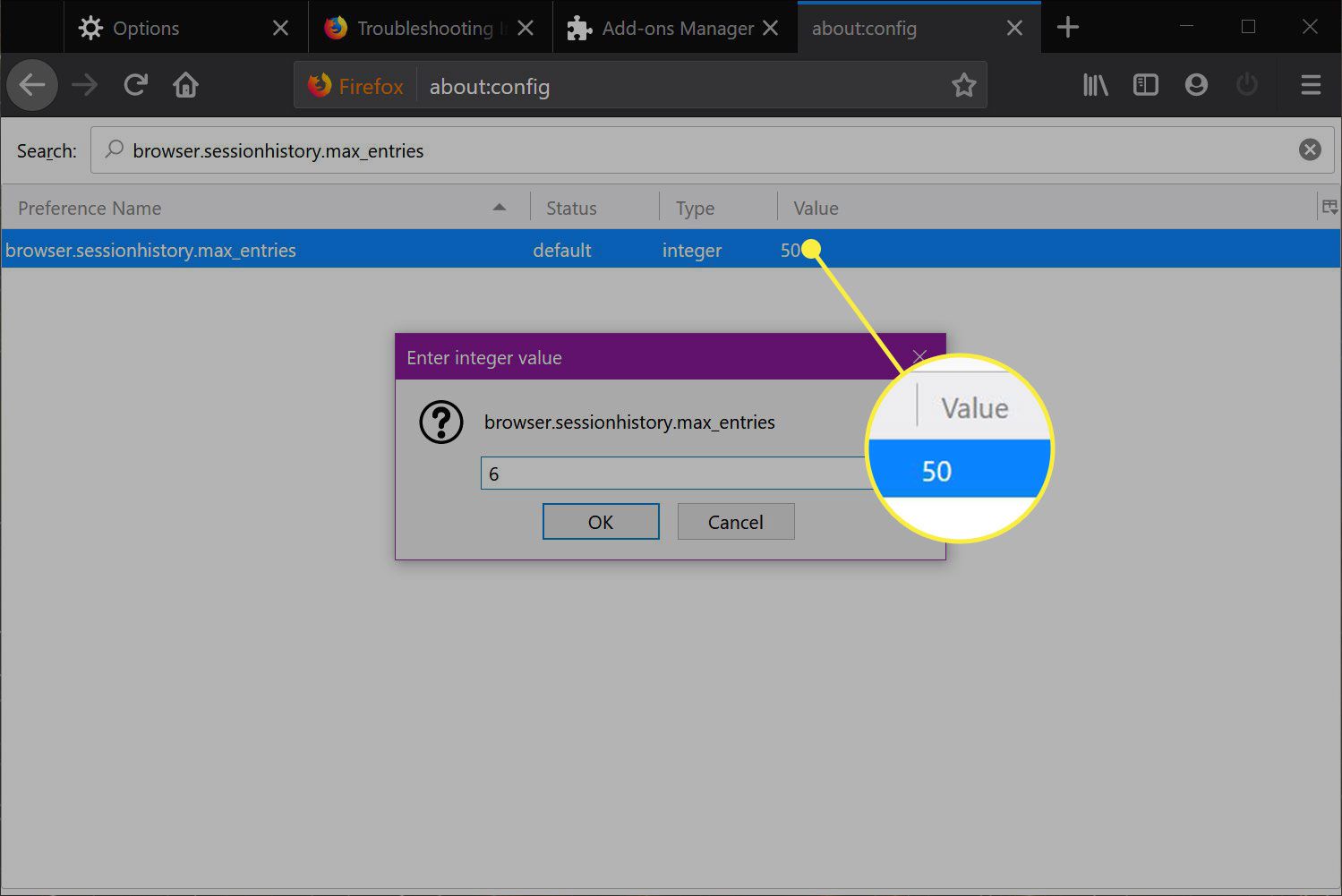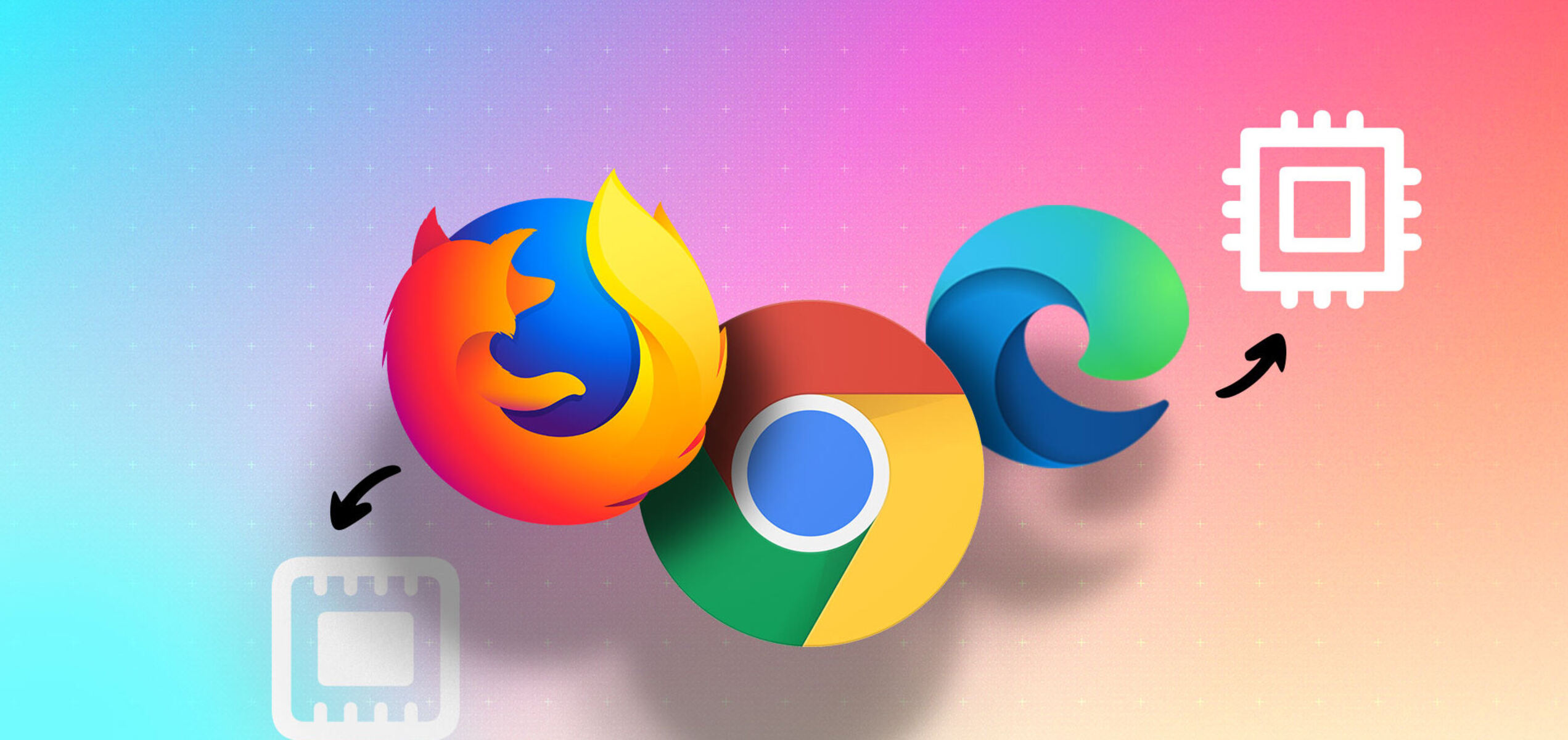Introduction
Firefox is a popular web browser known for its versatility and customizable features. However, one common issue that users encounter is excessive RAM usage, which can slow down their systems and hinder overall performance. Fortunately, there are several effective strategies to mitigate this problem and optimize Firefox's memory usage.
By implementing the techniques outlined in this article, you can enhance your browsing experience, reduce system resource consumption, and ensure that Firefox operates smoothly even when handling multiple tabs and complex web applications. Whether you're a casual user or a power user who heavily relies on Firefox for work or leisure, these methods will help you manage and limit the browser's RAM usage, ultimately leading to a more efficient and enjoyable browsing experience.
Let's delve into the various approaches that can be employed to address Firefox's RAM usage, ranging from simple adjustments within the browser to utilizing advanced settings and tools. Whether you're using Firefox on a resource-constrained device or simply seeking to optimize its performance on your system, the following strategies will empower you to take control of Firefox's memory consumption and streamline your browsing activities.
Check Firefox Version
Before delving into the intricacies of optimizing Firefox's RAM usage, it's crucial to ensure that you are using the latest version of the browser. Firefox regularly releases updates that not only introduce new features and security enhancements but also address performance-related issues, including memory management. By running the most recent version of Firefox, you can take advantage of the latest optimizations and bug fixes that may directly impact RAM utilization.
To check your Firefox version, follow these simple steps:
-
Open Firefox and click on the menu button located in the top-right corner of the browser window. The menu button is represented by three horizontal lines stacked on top of each other.
-
From the dropdown menu, select "Help," which will reveal a submenu of additional options.
-
Within the "Help" submenu, click on "About Firefox." This action will open a new tab displaying information about your current Firefox version and whether updates are available.
Upon accessing the "About Firefox" section, the browser will automatically initiate a check for updates. If an update is available, Firefox will proceed to download and install it, ensuring that you have the most recent version running on your system.
It's important to note that newer Firefox versions often include performance enhancements and memory optimizations, which can directly impact the browser's RAM usage. By staying up to date with the latest releases, you can benefit from these improvements and potentially mitigate excessive memory consumption.
In the event that an update is available, simply follow the on-screen prompts to complete the installation process. Once the update is successfully installed, you can proceed to explore additional methods for managing and limiting Firefox's RAM usage, ensuring an optimized browsing experience.
Ensuring that your Firefox browser is up to date is a fundamental step in addressing performance-related issues, including RAM utilization. By regularly checking for updates and running the latest version of Firefox, you can harness the full potential of the browser's optimizations and enhancements, ultimately contributing to a smoother and more efficient browsing experience.
Update Firefox
Ensuring that your Firefox browser is up to date is a fundamental step in addressing performance-related issues, including RAM utilization. By regularly checking for updates and running the latest version of Firefox, you can harness the full potential of the browser's optimizations and enhancements, ultimately contributing to a smoother and more efficient browsing experience.
When it comes to updating Firefox, the process is designed to be straightforward and user-friendly. By following a few simple steps, you can ensure that your browser is equipped with the latest features, security patches, and performance improvements. Here's a detailed guide on how to update Firefox to the latest version:
-
Open Firefox: Launch the Firefox browser on your system. You can do this by clicking on the Firefox icon in your applications folder or taskbar.
-
Access the Menu: Once Firefox is open, look for the menu button located in the top-right corner of the browser window. The menu button is represented by three horizontal lines stacked on top of each other.
-
Navigate to the Help Menu: Click on the menu button to reveal a dropdown menu. From the options presented, select "Help." This action will unveil a submenu containing additional options related to Firefox's settings and support features.
-
Check for Updates: Within the "Help" submenu, locate and click on "About Firefox." This action will open a new tab displaying information about your current Firefox version and whether updates are available. Firefox will automatically initiate a check for updates, ensuring that you are promptly informed if a newer version is available.
-
Install Available Updates: If an update is available, Firefox will prompt you to download and install it. Follow the on-screen prompts to complete the installation process. This typically involves a simple click to initiate the update, after which Firefox will handle the rest of the process seamlessly.
By following these steps, you can ensure that your Firefox browser is running the latest version, equipped with the most recent performance optimizations and bug fixes. Keeping your browser up to date is essential for addressing RAM usage concerns, as newer versions often include enhancements that directly impact memory management and overall performance.
In addition to addressing RAM usage, staying current with Firefox updates is crucial for maintaining a secure and stable browsing environment. Newer versions often introduce security patches and privacy features, further enhancing the overall browsing experience. Therefore, by making it a habit to regularly update Firefox, you can maximize the browser's potential and enjoy a seamless, efficient, and secure browsing experience.
Use Firefox's Built-in Task Manager
Firefox comes equipped with a powerful built-in Task Manager that provides valuable insights into the browser's resource usage, including memory consumption by individual tabs and extensions. By leveraging this feature, users can effectively identify and manage elements within Firefox that may be contributing to excessive RAM usage.
To access Firefox's Task Manager, users can follow these simple steps:
-
Open the Task Manager: While Firefox is running, navigate to the browser's menu by clicking on the three horizontal lines in the top-right corner of the window. From the dropdown menu, select "More Tools" and then click on "Task Manager." Alternatively, users can access the Task Manager by using the keyboard shortcut Shift + Esc.
-
Analyze Resource Usage: Upon opening the Task Manager, users are presented with a comprehensive overview of Firefox's resource consumption. The Task Manager displays a list of active tabs, extensions, and browser processes along with their respective memory and CPU usage. This detailed breakdown allows users to pinpoint specific elements that may be contributing to excessive RAM usage.
-
Identify Memory-Intensive Elements: By examining the memory usage of individual tabs and extensions, users can identify any elements that are consuming a disproportionate amount of RAM. This insight enables users to make informed decisions regarding the management of resource-intensive tabs and extensions, potentially alleviating excessive memory consumption.
-
Manage Tabs and Extensions: Armed with the information provided by the Task Manager, users can take proactive steps to address memory-intensive elements. This may involve selectively closing tabs with high memory usage, disabling or removing memory-intensive extensions, or identifying and addressing any underlying issues that contribute to excessive RAM consumption.
By utilizing Firefox's built-in Task Manager, users can gain valuable visibility into the browser's resource utilization and take targeted actions to manage and optimize memory usage. This proactive approach empowers users to make informed decisions regarding their browsing activities, ultimately contributing to a more efficient and responsive browsing experience.
Incorporating the use of Firefox's Task Manager into regular browsing routines can significantly impact the browser's overall performance and resource efficiency. By leveraging this powerful tool, users can effectively identify and address memory-intensive elements, leading to improved system responsiveness and a more streamlined browsing experience.
Disable Unused Add-ons and Plugins
Add-ons and plugins are valuable extensions that enhance the functionality and features of the Firefox browser. However, an excessive number of add-ons and plugins can contribute to increased RAM usage, potentially impacting the browser's performance. By identifying and disabling unused or unnecessary add-ons and plugins, users can effectively manage memory consumption and optimize Firefox for a smoother browsing experience.
To disable unused add-ons and plugins in Firefox, follow these steps:
-
Access the Add-ons Manager: Click on the menu button in the top-right corner of the Firefox window and select "Add-ons." This action will open the Add-ons Manager, providing an overview of installed extensions and plugins.
-
Review Installed Add-ons and Plugins: Within the Add-ons Manager, navigate to the "Extensions" and "Plugins" sections to review the list of installed add-ons and plugins. Take note of the ones that are actively used and those that may be redundant or no longer necessary.
-
Disable Unused Add-ons: For add-ons that are not regularly utilized or are no longer needed, simply click on the "Disable" button next to the respective add-on. This action effectively deactivates the add-on, preventing it from consuming system resources and contributing to excessive RAM usage.
-
Manage Plugins: Similarly, review the list of installed plugins and identify any that are unnecessary or obsolete. Click on the respective plugin and select the appropriate action, such as "Never Activate" or "Ask to Activate," to manage its behavior and reduce its impact on memory usage.
By disabling unused add-ons and plugins, users can streamline Firefox's resource allocation and mitigate the potential for excessive RAM consumption. This proactive approach not only contributes to improved browser performance but also ensures that system resources are efficiently utilized, leading to a more responsive and optimized browsing experience.
Regularly reviewing and managing add-ons and plugins in Firefox is essential for maintaining an efficient and streamlined browsing environment. By selectively disabling unused extensions and plugins, users can effectively control memory usage, resulting in a more responsive and stable browsing experience.
Clear Firefox Cache
Clearing the cache in Firefox is a fundamental maintenance task that can significantly impact the browser's performance and memory usage. The cache, which stores temporary files and data from websites, can accumulate over time and contribute to increased RAM usage. By regularly clearing the cache, users can ensure that Firefox operates efficiently and optimally manages its memory resources.
To clear the cache in Firefox, follow these simple steps:
-
Access the Clear Recent History Tool: In the Firefox browser, navigate to the menu button located in the top-right corner of the window. From the dropdown menu, select "Options" or "Preferences," depending on your operating system. Within the settings menu, navigate to the "Privacy & Security" tab to access the clearing options.
-
Select Clear Data: Within the "Privacy & Security" tab, locate the "Cookies and Site Data" section. Click on the "Clear Data" button to open the Clear Recent History tool. This tool allows users to specify the data to be cleared, including the cache.
-
Choose Cache for Clearing: Within the Clear Recent History tool, ensure that the "Cache" option is selected. Users can also choose additional data to clear, such as cookies and browsing history, based on their preferences.
-
Clear the Cache: Once the cache option is selected, click on the "Clear Now" button to initiate the clearing process. Firefox will promptly clear the cache, removing temporary files and data stored from websites.
By clearing the cache in Firefox, users can effectively remove accumulated temporary data, potentially reducing RAM usage and optimizing the browser's performance. This proactive maintenance task ensures that Firefox operates efficiently and manages memory resources effectively, contributing to a more responsive and streamlined browsing experience.
Regularly clearing the cache is essential for maintaining Firefox's performance and memory management. By incorporating this simple yet impactful maintenance task into regular browsing routines, users can ensure that the browser operates optimally, with minimized RAM usage and improved responsiveness. Additionally, clearing the cache can address potential issues related to cached data, ensuring that users consistently experience a seamless and efficient browsing environment.
Reduce Content Process Limit
Firefox's multi-process architecture allows it to run separate content processes for individual tabs and extensions, enhancing stability and security. However, this feature can also contribute to increased RAM usage, especially when handling numerous tabs simultaneously. To address this, users can strategically reduce the content process limit in Firefox, effectively managing memory allocation and optimizing performance.
To adjust the content process limit in Firefox, follow these steps:
-
Access Firefox Settings: Open Firefox and type "about:config" in the address bar, then press Enter. This action will prompt a warning message, acknowledging the risks of modifying advanced settings. Proceed by clicking "Accept the Risk and Continue."
-
Search for Content Process Limit: In the search bar at the top of the page, enter "dom.ipc.processCount." This setting determines the maximum number of content processes that Firefox can utilize.
-
Modify the Content Process Limit: Once the "dom.ipc.processCount" setting is displayed, double-click on it to modify the value. By default, Firefox sets this value based on system resources, but users can lower it to conserve memory. For instance, reducing the content process limit to a specific number, such as 4 or 6, can effectively manage RAM usage while balancing performance.
By reducing the content process limit, users can exert greater control over Firefox's memory allocation, particularly when dealing with resource-intensive browsing sessions. This adjustment enables the browser to operate within a more constrained memory footprint, potentially mitigating excessive RAM usage and enhancing overall system responsiveness.
Incorporating this optimization technique into Firefox's advanced settings empowers users to tailor the browser's resource utilization to their specific preferences and system capabilities. By strategically managing the content process limit, users can strike a balance between memory efficiency and browsing performance, ultimately contributing to a more streamlined and responsive browsing experience.
Use Lightweight Themes and Extensions
In the realm of web browsers, themes and extensions play a pivotal role in customizing the user interface and expanding functionality. While these enhancements offer a myriad of benefits, it's essential to consider their impact on memory usage, especially in the context of optimizing Firefox's performance. By prioritizing lightweight themes and extensions, users can effectively manage RAM consumption and ensure a responsive browsing experience.
Lightweight themes, also known as personas, are visual enhancements that alter the appearance of Firefox without significantly impacting system resources. These themes allow users to personalize the browser's interface with minimal memory overhead, making them an ideal choice for those seeking aesthetic customization without compromising performance. By opting for lightweight themes, users can infuse their browsing environment with a personalized touch while maintaining efficient memory utilization.
Similarly, lightweight extensions, or add-ons, offer additional functionality and features to Firefox without imposing a substantial memory burden. When selecting extensions, users should prioritize those that are designed with efficiency in mind, ensuring that they seamlessly integrate into the browser ecosystem without unduly taxing system resources. By choosing lightweight extensions, users can expand Firefox's capabilities while preserving optimal memory management.
In practice, users can explore the Mozilla Add-ons website, which hosts a diverse array of themes and extensions curated for Firefox. When selecting themes, look for options labeled as lightweight or low-impact, indicating their minimal resource footprint. These themes allow users to personalize their browsing environment without sacrificing performance.
When evaluating extensions, consider factors such as user reviews, developer reputation, and resource consumption. Opt for extensions that are purpose-built, well-maintained, and designed to operate efficiently within Firefox's architecture. By prioritizing lightweight themes and extensions, users can curate a tailored browsing experience while safeguarding optimal memory utilization.
In essence, the strategic adoption of lightweight themes and extensions empowers users to personalize and extend Firefox's capabilities while mitigating excessive RAM usage. By making informed choices when customizing the browser, users can strike a harmonious balance between aesthetics, functionality, and performance, ultimately fostering a responsive and efficient browsing environment.
Disable Hardware Acceleration
Hardware acceleration is a feature that offloads certain tasks from the CPU to the GPU, aiming to enhance performance and rendering capabilities. While this technology can significantly improve graphics-intensive tasks, it may also contribute to increased RAM usage in certain scenarios. In Firefox, disabling hardware acceleration can be a strategic approach to managing memory resources and optimizing overall browser performance.
To disable hardware acceleration in Firefox, users can follow these straightforward steps:
-
Access Firefox Settings: Open the Firefox browser and click on the menu button located in the top-right corner of the window. From the dropdown menu, select "Options" or "Preferences," depending on your operating system. Within the settings menu, navigate to the "General" or "Performance" tab to access the hardware acceleration settings.
-
Disable Hardware Acceleration: Within the performance settings, locate the option related to hardware acceleration. Uncheck the box next to "Use hardware acceleration when available" to effectively disable this feature. Once disabled, Firefox will rely on the CPU for rendering tasks, potentially reducing the strain on system memory.
By disabling hardware acceleration, users can exert greater control over Firefox's resource utilization, particularly in scenarios where GPU-intensive tasks may contribute to excessive RAM usage. This adjustment allows the browser to operate within a more controlled memory footprint, potentially leading to improved responsiveness and system stability.
In practice, the decision to disable hardware acceleration should be approached with consideration for the specific hardware configuration and browsing habits. While hardware acceleration can deliver performance benefits, certain systems may experience memory-related issues that warrant the deactivation of this feature. By evaluating the impact on RAM usage and overall browsing performance, users can make an informed decision regarding the utilization of hardware acceleration in Firefox.
In summary, disabling hardware acceleration in Firefox presents a strategic option for managing memory resources and optimizing browser performance. By carefully assessing the trade-offs between GPU offloading and RAM utilization, users can tailor Firefox's behavior to align with their system capabilities and browsing requirements, ultimately fostering a more efficient and responsive browsing experience.
Conclusion
In conclusion, optimizing Firefox's RAM usage is essential for ensuring a smooth and responsive browsing experience. By implementing the strategies outlined in this article, users can take proactive steps to manage memory consumption and enhance the performance of the Firefox browser.
From checking and updating the Firefox version to leveraging the built-in Task Manager for resource insights, users can gain valuable control over memory allocation. Disabling unused add-ons and plugins, clearing the browser cache, and strategically adjusting the content process limit are effective measures to mitigate excessive RAM usage. Additionally, prioritizing lightweight themes and extensions while considering the impact of hardware acceleration can further contribute to efficient memory management within Firefox.
By staying informed about the latest updates and optimizations, users can harness the full potential of Firefox's performance enhancements and bug fixes. Regular maintenance tasks, such as clearing the cache and managing add-ons, play a crucial role in sustaining an optimized browsing environment. Furthermore, the strategic adjustment of advanced settings, such as the content process limit and hardware acceleration, empowers users to tailor Firefox's behavior to align with their specific system capabilities and browsing requirements.
Ultimately, the collective implementation of these strategies enables users to strike a harmonious balance between functionality, aesthetics, and performance within the Firefox browser. By proactively managing memory resources and optimizing performance, users can enjoy a responsive and efficient browsing experience, even when handling complex web applications and multiple tabs.
In essence, the journey to limit Firefox's RAM usage is a proactive endeavor that empowers users to take control of their browsing environment. By incorporating these strategies into their regular browsing routines, users can navigate the web with confidence, knowing that their Firefox browser is optimized for efficient memory utilization and optimal performance.

























